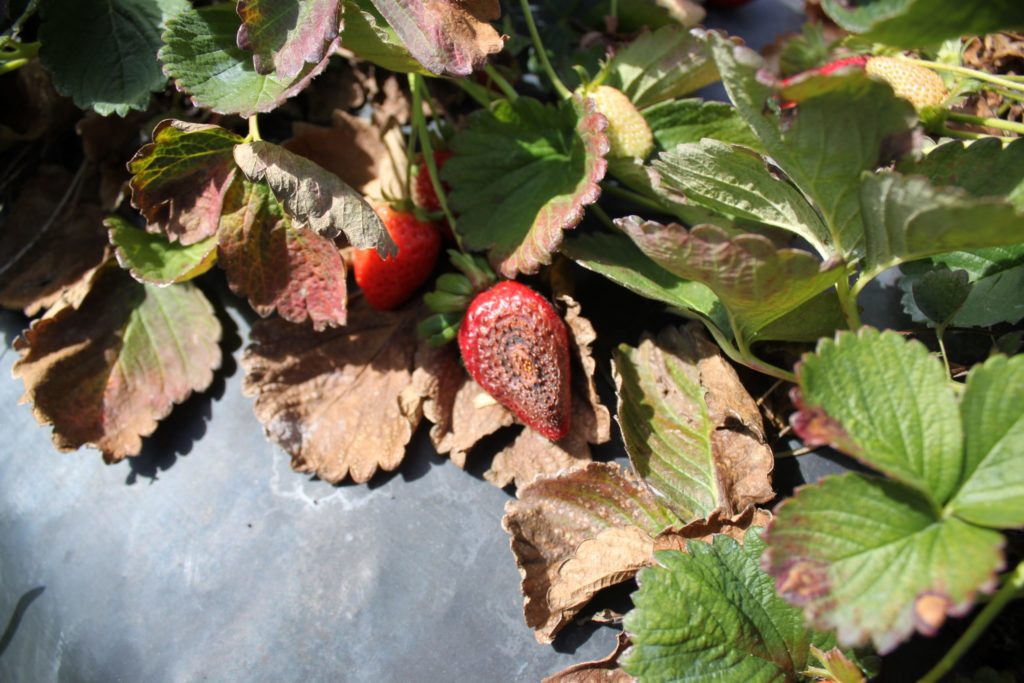
By Clint Thompson
Neopestalotiopsis Fruit Rot disease has yet to show up in North Carolina strawberries. The state’s environment has helped with that, believes one North Carolina (N.C.) State plant pathologist.
“It does show up in clinic samples at the Plant Disease and Insect Clinic at N.C. State. Sometimes it’s a leaf sample or crown sample, but so far, I have not gotten it as a fruit rot sample into the clinic. Where we have had it in the plant material or on leaves, it has been very few samples,” said Bill Cline, N.C. State Extension specialist in small fruits production.
“I wonder if we’re also dealing with our climate being a little bit cooler and conditions not being quite as bad for neopestalotiopsis as in Florida. Maybe Georgia’s still a little warmer. Maybe they get a little more disease there compared to North Carolina and maybe further north. I have to believe it’s partly our environment that helps with that.”
Importance of Scouting
But growers should avoid becoming complacent, especially in the future when they receive their plant material from nurseries.
“It’s considered to be a nursery source problem as well. It’s very much something that if a grower sees it in their plant material, they need to be in contact with their nurserymen and let them know there’s a problem,” Cline said. “It may be something that can be addressed at the nursery level and reduce the risk of the plants coming to the growers.”
Neopestalotiopsis causes leaf spots on strawberry plants. It develops quickly and produces spores on the leaves. It can cause severe leaf spotting and fruit rot under favorable weather conditions. The disease was first discovered during the 2018-19 season in five farms and was attributed to one nursery source in North Carolina.
More than 20 farms experienced the disease during the 2019-20 season. It was attributed to two nursery sources early in the season in North Carolina and Canada.









